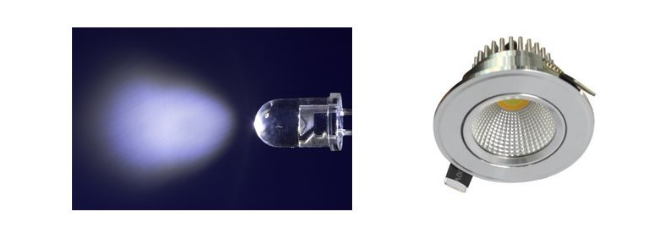Light-emitting diode lamps, also known as LED lamps, refer to appliances that can transmit light, distribute and change the light distribution of the LED light source, including all parts and components required to fix and protect the LED light source except for the LED light source, and connect to the power source The necessary line accessories.

①Installation method;
②Light source type;
③Anti-shock protection grade;
④Shell protection grade;
⑤Mounting surface material and insulation material cover;
⑥Light control device; The above 6 points are the same and the structure is similar can be divided into the same unit.
Note: For the certified products of LED lamps and LED control devices, the certified products whose nominal power and measured power are both ≤25W and the certified products with nominal power or measured power> 25W cannot be in one unit.
What are the requirements for the parts used in the product?
Such as: power cord; AC electronic control device (drive) for LED module; electronic/inductive ballast for fluorescent lamp
b) If the parts are not certified by CCC, try to choose parts with CQC certification.
Such as: screw lamp holder; fluorescent lamp holder; wiring terminal; flexible cord switch
c) Some optional parts can be added appropriately.
What are the forms of protection against electric shock?
Class I-basic insulation, protective grounding;
Class Ⅱ-double insulation/reinforced insulation;
Class Ⅲ-power supply voltage SELV, lamp working voltage SELV.
Which parts of Class I lamps must be grounded?
There is only basic insulation between live parts, and metal parts that can be touched (when the installation is completed, when the light source or starter is opened for replacement) or that are easy to contact with the supporting surface.
What kind of positioning and protective measures should be taken for power wiring terminals?
Generally, an insulating gasket is placed under the terminal and fixed with double screws. The purpose is to prevent a strand of free conductor that may come out of the stranded conductor after wiring does not contact metal parts (for power conductors) or live parts (for grounding conductors) .
What are the restrictions on the use of self-tapping screws?
Unless there are proper locking devices (such as spring washers), self-tapping screws cannot be used to connect current-carrying components; unless there are at least two at each connection, self-tapping screws cannot be used to provide grounding continuity.
How to judge which parts of the glass or translucent cover need to be subjected to impact test according to the requirements of fragile parts?
After removing these parts, determine whether the IP protection level of the lamp is reduced, whether the protection against electric shock is still up to the standard, and whether the protection against the hazards of ultraviolet light and light source sputtering is still up to the standard. If there is any negative judgment, it should be regarded as a fragile part and subjected to an impact test.
What are the mechanical performance requirements for live flexible cables used to hang lamps?
A flexible cable with a large enough conductor cross-sectional area should be selected so that the conductor's force during suspension is not more than 15N/mm2, and the weight of the flexible cable can not exceed 5kg.
Under what circumstances need to be equipped with a flexible cord holder?
The luminaire is provided or designed to use a non-detachable flexible cable or cord (power cord or cord, interconnection cable), and it extends beyond 80mm from the luminaire, it needs to be equipped with a cord holder.
How to complete the loop installation of lamps?
The loop installation of the luminaire can only be done through the appliance coupler or terminal block.
Guangzhou Saida Testing Technology Co., Ltd. was established in April 2006. It is a CNAS accredited laboratory of China National Accreditation Service for Conformity Assessment and an accredited partner of CQC, UL, VDE, TUV, JQA, JECTEC and other well-known institutions. If you have testing and certification requirements, you are welcome to write to us at any time. Our contact information is as follows:
Guangzhou Saida Testing Technology Co., Ltd.
Unit 703,705, Tianan Energy-saving Technology Park Development Building, No.555 Panyu Avenue North, Panyu District, Guangzhou
Ms. Chen Xi
Mobile: 13825088768
Email: service@certitek.cn
Miss Xie Minshi
Mobile: 13560432236
Email: cs1@certitek.cn
Miss Chen Huomei
Mobile phone: 15975545208
Email: cs1@certitek.cn
Add.:Room703、705/7F, Development Building, Tian An Hi-Teck Ecological Park, No.555 North Road Panyu Avenue, Panyu District, Guangzhou City, 511400, China
Tel.:020-39211670 Fax:020-39211640 E-mail:info@certitek.cn

